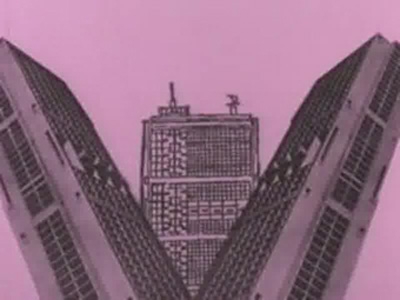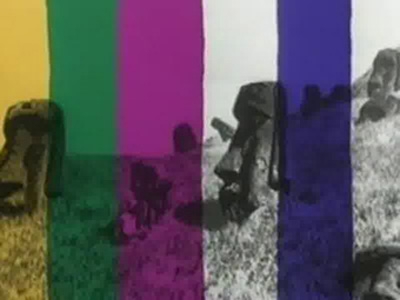

1958, France, colour, music by Edgar Varèse, 8 min.
Poème électronique is the first, electronic-spatial environment to combine architecture, film, light and music to a total experience made to functions in time and space. Under the direction of Le Corbusier, Iannis Xenaki's concept and geometry designed the World's Fair exhibition space adhering to mathematical functions. Edgard Varèse composed the both concrete and vocal music which enhanced dynamic, light and image projections conceived by Le Corbusier. Varèse's work had always sought the abstract and, in part, visually inspired concepts of form and spatial movements. Among other elements for Poème électronique he used machine noises, transported piano chords, filtered choir and solo voices, and synthetic tone colourings. With the help of the advanced technical means made available through the Philips Pavilion, the sounds of this composition for tape recorder could wander throughout the space on highly complex routes.
The Philips Pavilion presented a collage liturgy for twentieth-century humankind, dependent on electricity instead of daylight and on virtual perspectives in place of terrestrial views.
Golo Föllmer
From Marc Treib, Space Calculated in Seconds, Princeton, 1996
